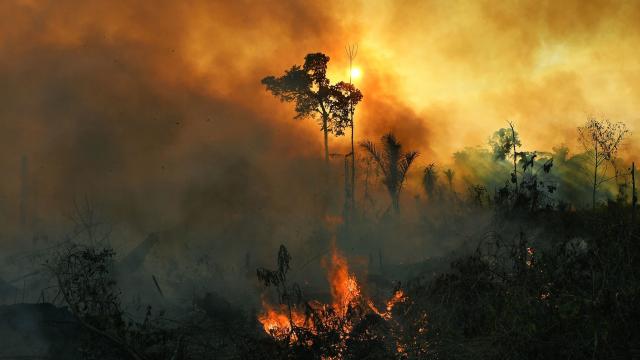Only 3% of land on Earth still qualifies as “ecologically intact,” with undisturbed habitats and healthy populations of its original animal species, grim new research shows.
That’s a much bleaker picture than the one painted by previous assessments, which pegged that number much higher, estimating that 20% to 40% of land is still intact. But those analyses, focused specifically on habitat intactness, were mostly based on satellite imagery, which doesn’t provide much detail about what’s happening on the ground.
“Field work by many people clearly shows there are species that have been lost from these areas of intact habitat — large and medium carnivores and large and medium herbivores in particular,” Andrew Plumptre, who heads the Key Biodiversity Areas Secretariat and was the lead author of the study, wrote in an email. “Some have been lost or reduced in number because of hunting by people, some lost because of the introduction of invasive species, such as cats and dogs, and some due to disease.”
Instead of merely examining aerial images for the report, published Thursday in Frontiers in Forests and Global Change, Plumptre and his team also overlaid maps of human destruction of ecosystems with maps indicating where animal species are either too few in number to maintain a healthy ecosystem or have completely disappeared from their original ranges.
To evaluate intactness, the authors used three criteria. Like previous studies, they looked at habitat intactness, a measure of how much influence humans have had on habitats. They also looked at faunal intactness, which is an indicator of how many of a land’s original species have disappeared since ancient times (specifically since 1500 CE). And they assessed functional intactness, which determines where species are abundant and able to serve their ecological roles as top predators, seed dispersers, or other functions. By these latter two measures, terrestrial ecosystems aren’t doing too well.
“Faunal intactness was 2.9% of the land surface and functional intactness 2.8%,” said Plumptre. That means some 97% of land has been screwed up by industry, hunting, the introduction of invasive species, or other anthropogenic impacts.
The intact ecosystems that the team identified fall in the Congo, Tanzania, the Amazon rainforest, Siberia, and southern Chile.
Even more troublingly, the team found that just 11% of the ecologically intact lands they identified is protected by countries’ conservation laws. An even smaller portion — just 4% — is covered by Key Biodiversity Areas, or areas where the International Union for Conservation of Nature says it’s particularly important to preserve wildlife.
Not all is lost, though. The authors found that an essential missing component from large areas of otherwise intact land is the disappearance of some key species, especially large mammals. Some of these large mammals have gone completely extinct, but others are still surviving elsewhere. In those cases, the authors say that by reintroducing just a small number (between one and five) of species that play crucial functions to certain areas could bring up to 20% of the world’s land back to ecological intactness.
The authors identify six important global locations where this method could be fruitful: eastern Russia, northern Canada, Alaska, the Amazon Rainforest, the Sahara Desert, and the Congo tropical forest. In these areas, though species populations have shrunk, there is still plenty of original foliage and habitat around to support animals if they’re reintroduced.
The study argues that we need a new way of thinking about ecological health. Right now, the authors say, restoration is mostly focused on restoring degraded habitats. That’s important, but it’s not enough.
“We should also think about restoring species to regain ecological integrity across more of the Earth,” said Plumptre.
